
Whenever there was a turning point in an 80s movie, you could expect a music montage. Whether it was rebuilding a classic car, a group of rebellious teens learning to dance, or the karate tournament advancing to the final match, an upbeat song helped the story jump through time without making the viewer watch all the actual hard work.
Did you really want to see the protagonist standing in line at the auto parts store to get an air filter for the ’67 Camaro he’s restoring?
It often takes many days or weeks to complete one of my whimsical wildlife pieces, and I enjoy most of it. Drinking hot black coffee, tunes in my earbuds, I’m quite content to spend hours at a time painting tiny little hairs on a wolf’s muzzle or adding texture detail so the sea turtle’s skin looks real.
But if you were watching this work over my shoulder, I guarantee you would be bored out of your mind.
My buddy Derek is one of the most incredible tattoo artists you’ll ever see. When I hang out at the shop, I’ll often lean over his shoulder to watch. His linework is ridiculously precise, and I’m fascinated at the silky-smooth colour gradients he achieves with a tattoo machine. But eventually, it gets boring. He’ll often have clients that sit for hours all day for three days straight.
I just want to see some of the work in progress and the finished piece.
I’ve been creating time-lapse videos off and on for many years, and even though they can add hours of extra work to a painting, they’re fun to put together.
Sometimes I’ll record a voiceover, something inspirational for other artists, or relevant thoughts on the piece. Over the years, I’ve done a few of those for Wacom, the company that makes the tablets and displays I’ve been using since the late 90s. While I still love their products and will continue to recommend them, the best days of that working relationship are likely behind me now.
Most corporations are still chasing the likes and shares on social media, whereas I am not. I have no designs on becoming an Instagram influencer. I’d rather spend that time creating more art.
The time-lapse videos I enjoy most are the short ones with a musical accompaniment. These days I have a monthly subscription to Epidemic Sound, and it allows me to find the right track to go with a painting, regardless of the mood I’m trying to set.
I record the first part of the video over my left shoulder with my DSLR camera. I must keep in mind that the camera is beside me on the tripod, careful not to bump it. Because I’m recording a digital screen with a digital capture device, it also creates lighting problems.
Movies and TV shows will often add device and monitor screens after the fact in editing because it’s so difficult and time-consuming to record them with a camera.
But people like to see my hand holding the stylus, moving around the display.
For the rest of the video, I use Camtasia‘s screen capture software. I’ve been using it to record and edit since I created my DVDs ten years ago, and it works well.
But when I get down to the smallest of hairs in the painting, making subtle shading changes, and applying catchlights to the wet skin of the nose or around the eyes, it eventually becomes difficult for the viewer to follow the cursor.
And finally, our attention spans keep getting shorter. With slot machine scrolling on our phones, multiple tabs open on our desktops and pinging alerts going off all around us, holding somebody’s interest is a challenge.
I used to record four- or five-minute time-lapse videos, but most people won’t sit through those anymore, so I try to keep them under two minutes. Of course, it means there are significant jumps in the painting’s progress and detail, but it works.
People just want to see some of the work in progress and the finished piece.
Cheers,
Patrick
P.S. As always, feel free to share the video, with my thanks. That goes for anything else I post on this site as well.


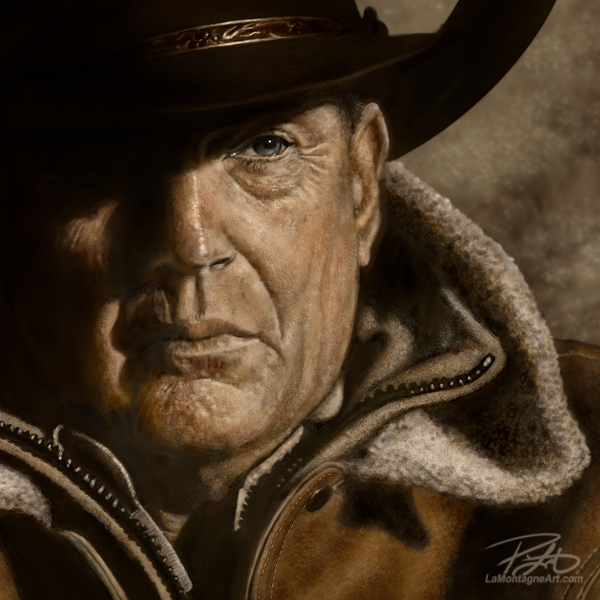
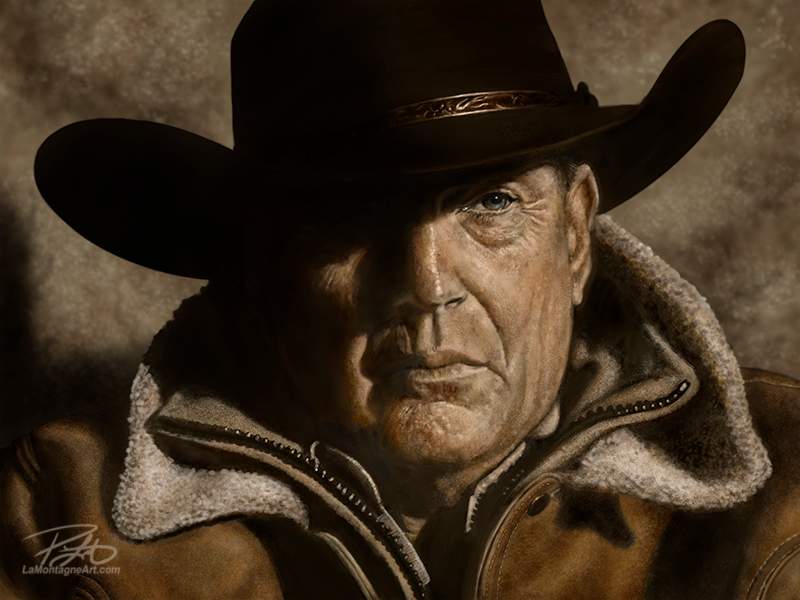 When I’m not drawing and distributing daily syndicated editorial cartoons, I’m painting whimsical wildlife portraits for prints and licensing. Add in the usual office administration, marketing, writing and everything else that goes along with self-employment, and that’s pretty much how I spend my days.
When I’m not drawing and distributing daily syndicated editorial cartoons, I’m painting whimsical wildlife portraits for prints and licensing. Add in the usual office administration, marketing, writing and everything else that goes along with self-employment, and that’s pretty much how I spend my days.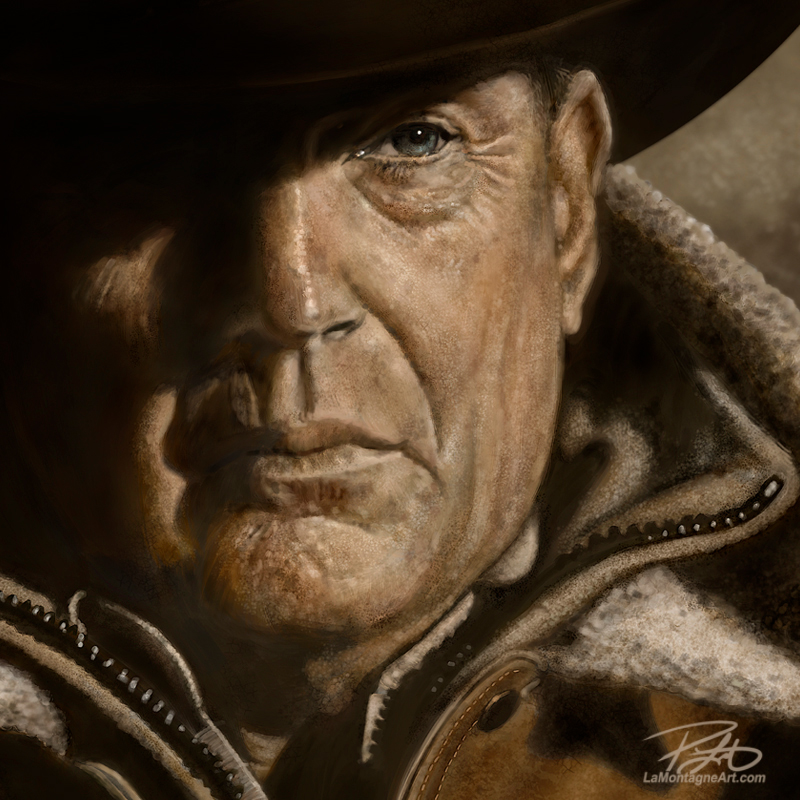 I started this painting in July, and I worked on it for a couple of hours here and there whenever I could find the time. I had planned to have it done before the fourth season began this month, but the paying gigs always take priority. So this past week, I put in the last ten or so hours over a few days. With no deadline, there was no reason to rush it, but I also didn’t want this painting to last for too much longer. As much as I loved the work, the best part is calling it done.
I started this painting in July, and I worked on it for a couple of hours here and there whenever I could find the time. I had planned to have it done before the fourth season began this month, but the paying gigs always take priority. So this past week, I put in the last ten or so hours over a few days. With no deadline, there was no reason to rush it, but I also didn’t want this painting to last for too much longer. As much as I loved the work, the best part is calling it done.
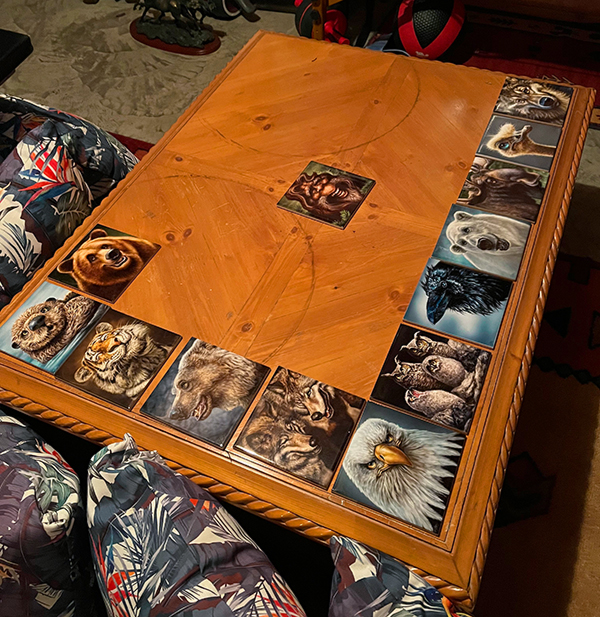 Brian had already purchased a handful of trivets he found in stores, but he needed a lot more and wanted to know if I could make that happen for him. Since the trivets come from
Brian had already purchased a handful of trivets he found in stores, but he needed a lot more and wanted to know if I could make that happen for him. Since the trivets come from 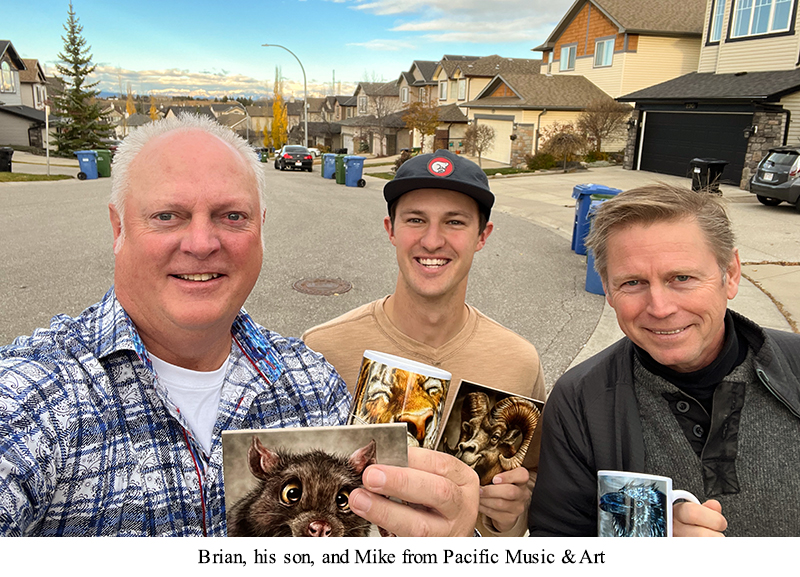 Earlier this week, Mike was in Alberta and Saskatchewan visiting retailers and vendors, and family in Calgary. While there, he met up with Brian to deliver his order of 25 more trivets for the table. It was the first ceramic printing for some of the newer paintings.
Earlier this week, Mike was in Alberta and Saskatchewan visiting retailers and vendors, and family in Calgary. While there, he met up with Brian to deliver his order of 25 more trivets for the table. It was the first ceramic printing for some of the newer paintings.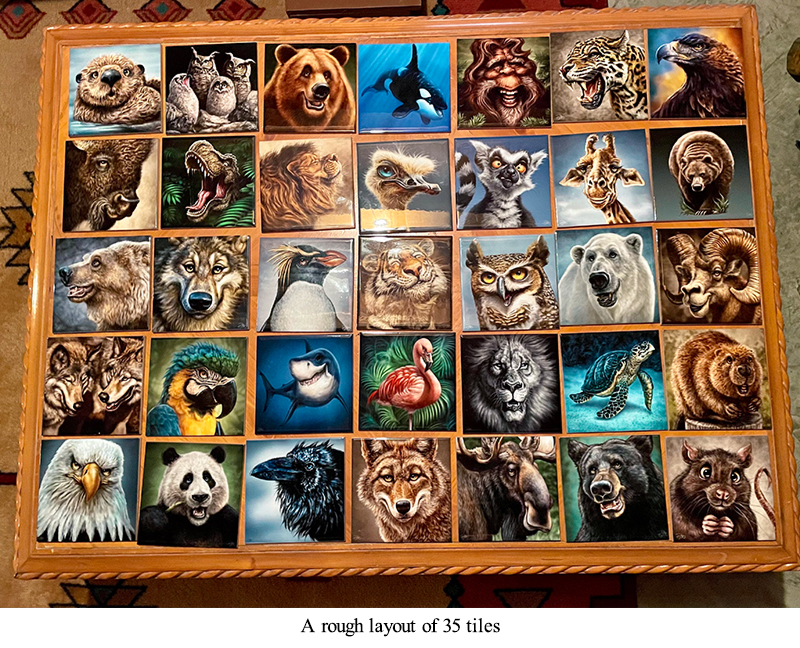 That means I can look forward to sharing more photos later, and hopefully, I’ll get to take those myself if I see the finished piece in person. The whole project is incredibly flattering.
That means I can look forward to sharing more photos later, and hopefully, I’ll get to take those myself if I see the finished piece in person. The whole project is incredibly flattering.
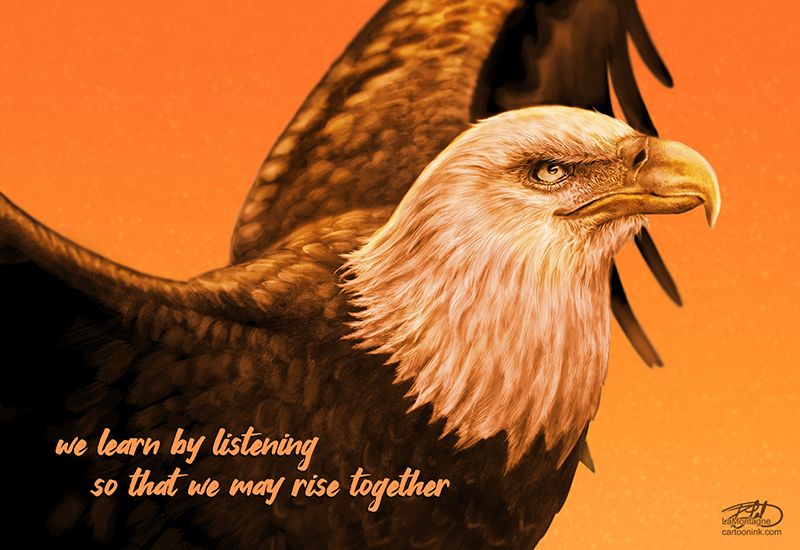 Early in this editorial cartoon profession, somebody once told me that editorial cartoons are supposed to make you laugh, think, and hopefully do both. I think it was Terry Mosher (Aislin).
Early in this editorial cartoon profession, somebody once told me that editorial cartoons are supposed to make you laugh, think, and hopefully do both. I think it was Terry Mosher (Aislin).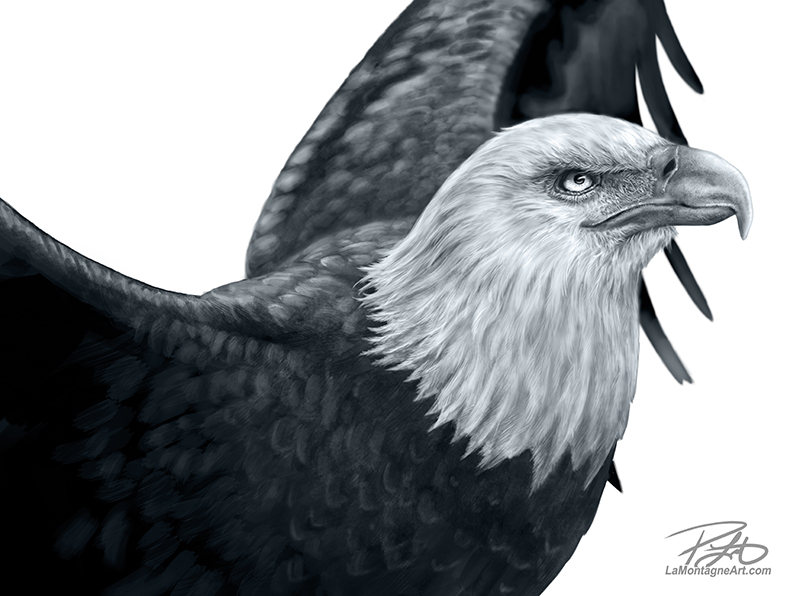 When I first created my animal art, I called them Totems but stopped the practice a few years ago.
When I first created my animal art, I called them Totems but stopped the practice a few years ago.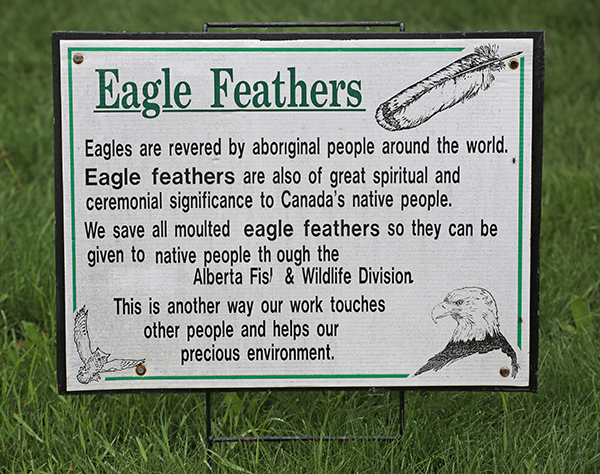

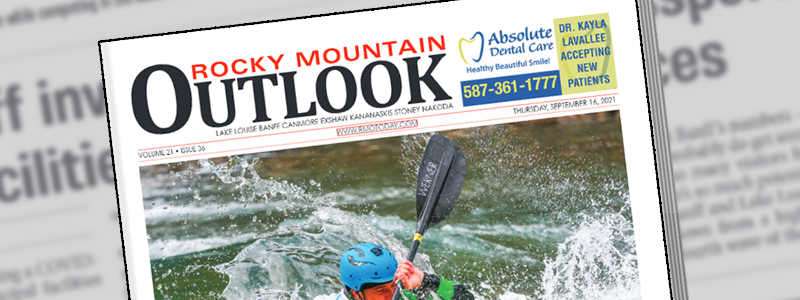
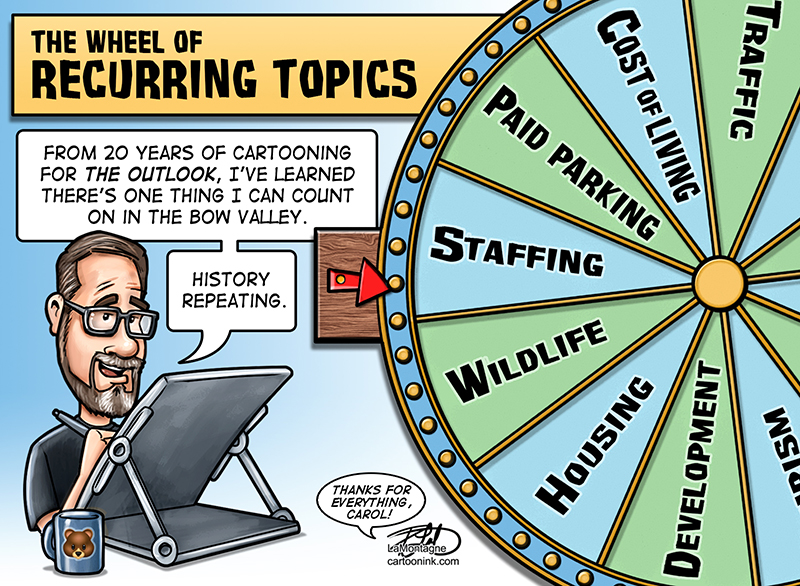

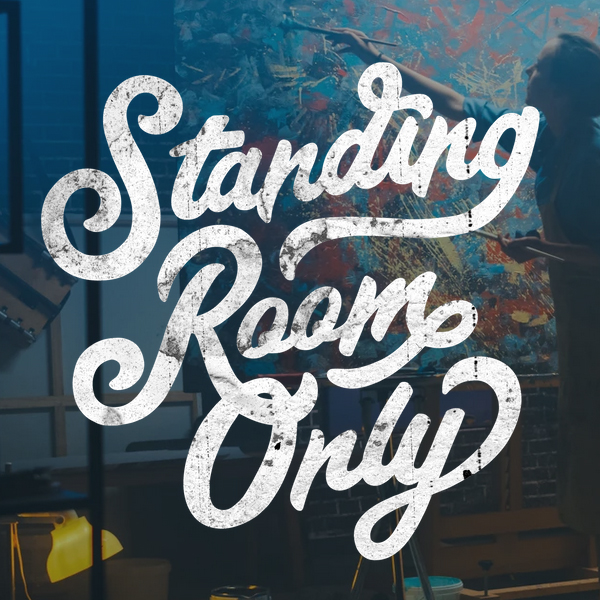
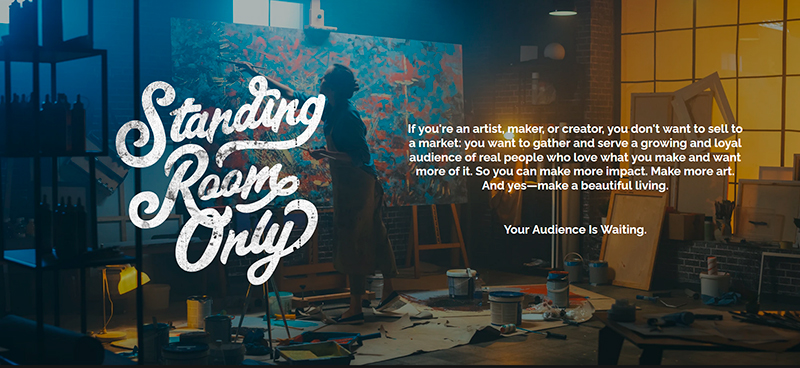

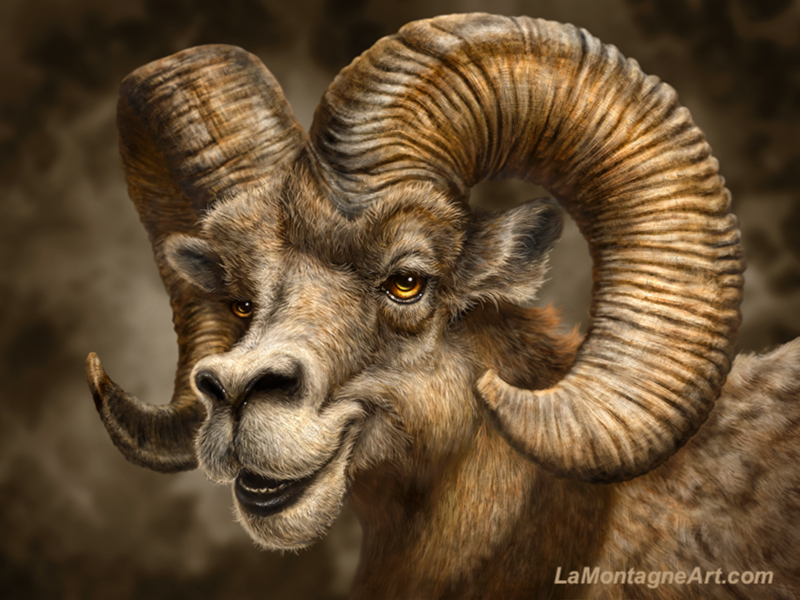 Driving back to Canmore from visiting a friend in Exshaw, I came around the bend to a massive herd of bighorn sheep. There were 40-50 of them on both sides of the secondary highway and a handful crossing from one side to the other. Thankfully, I had plenty of time to slow down and navigate the obstacle course of rams, ewes, lambs, and the four or five tourist vehicles stopped to take pictures.
Driving back to Canmore from visiting a friend in Exshaw, I came around the bend to a massive herd of bighorn sheep. There were 40-50 of them on both sides of the secondary highway and a handful crossing from one side to the other. Thankfully, I had plenty of time to slow down and navigate the obstacle course of rams, ewes, lambs, and the four or five tourist vehicles stopped to take pictures.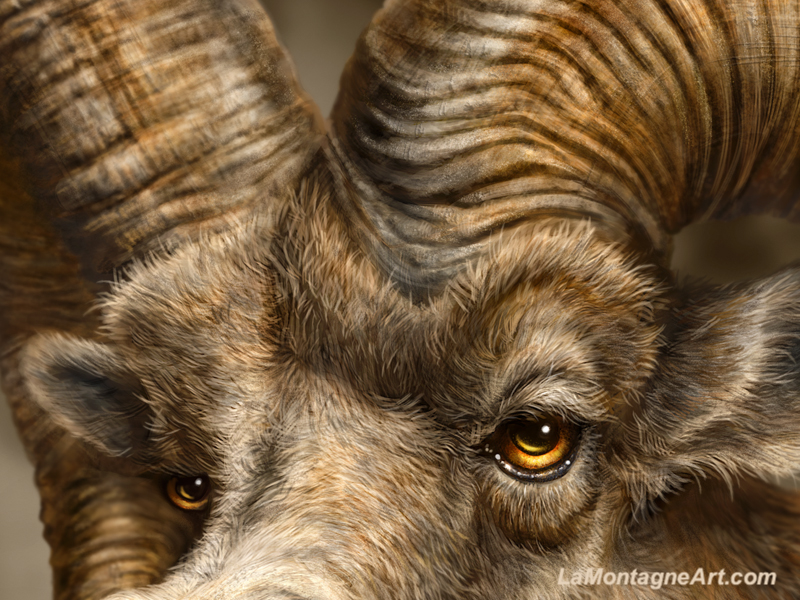 I’ll still take pictures of elk, bighorn sheep and deer, but it’s not nearly as much a thrill as it used to be. I didn’t stop when I came across that herd the other day, despite a safe pullout parking lot close by, but I have before. The reference for this painting was a photo I took at Lake Minnewanka a few years ago when I had explicitly gone searching for bighorn sheep.
I’ll still take pictures of elk, bighorn sheep and deer, but it’s not nearly as much a thrill as it used to be. I didn’t stop when I came across that herd the other day, despite a safe pullout parking lot close by, but I have before. The reference for this painting was a photo I took at Lake Minnewanka a few years ago when I had explicitly gone searching for bighorn sheep.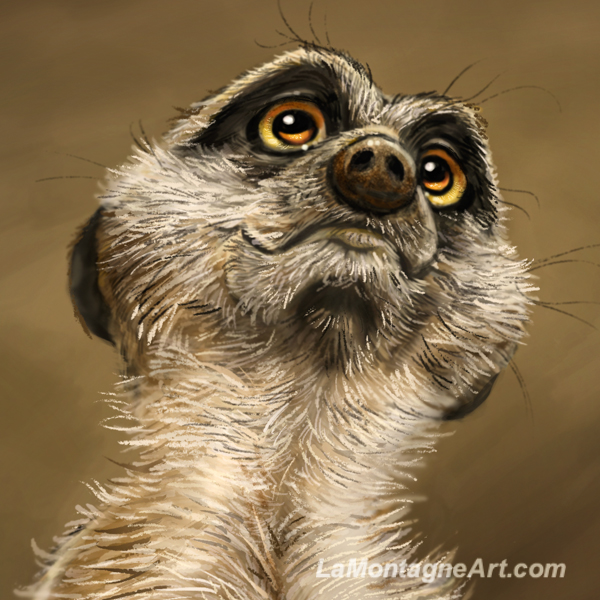
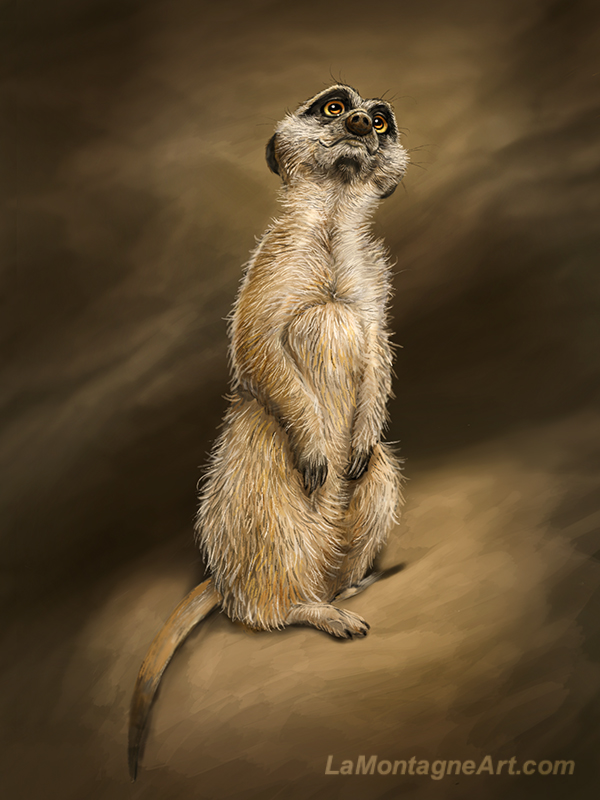 Many artists I know have multiple shelves full of art books. I only have about a dozen of this type of book. Any more than that and some would probably never get opened more than once. As it is now, the ones I have only leave the shelves about once a year. But I’m still tempted to buy every time I see a new one.
Many artists I know have multiple shelves full of art books. I only have about a dozen of this type of book. Any more than that and some would probably never get opened more than once. As it is now, the ones I have only leave the shelves about once a year. But I’m still tempted to buy every time I see a new one.
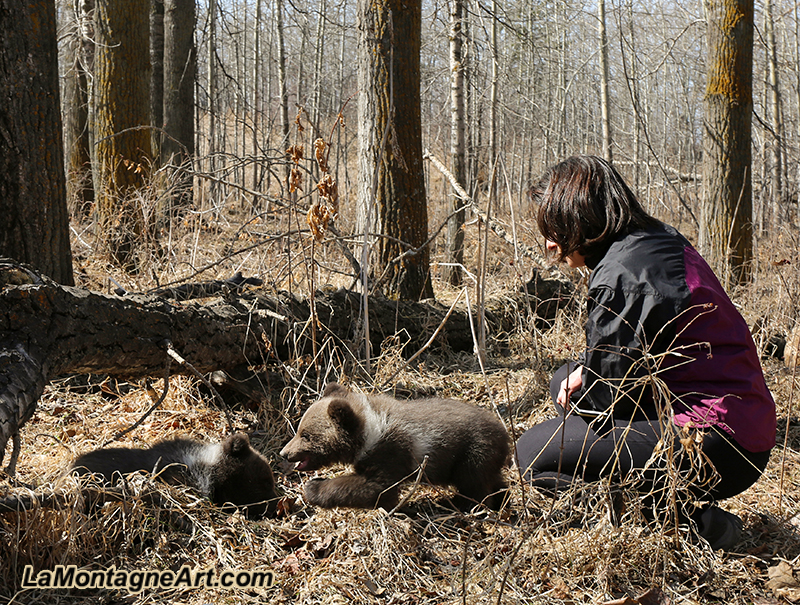 Earlier this week, Shonna and I were thrilled to be invited to
Earlier this week, Shonna and I were thrilled to be invited to 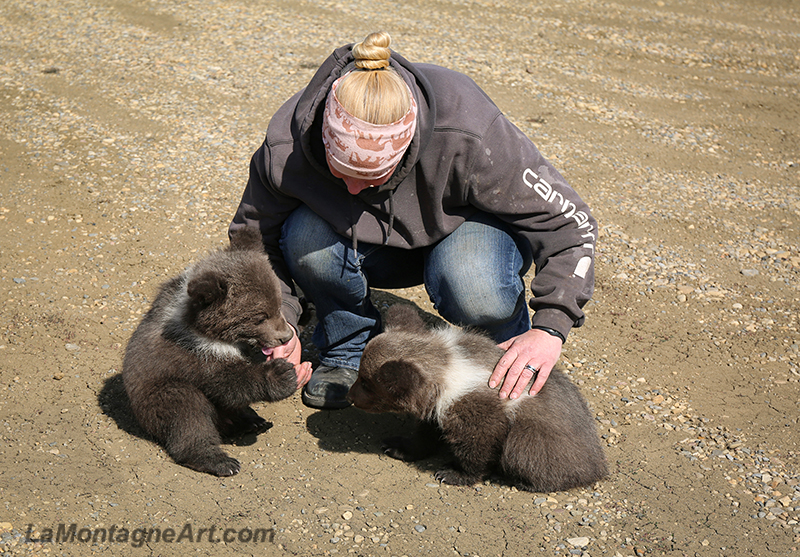
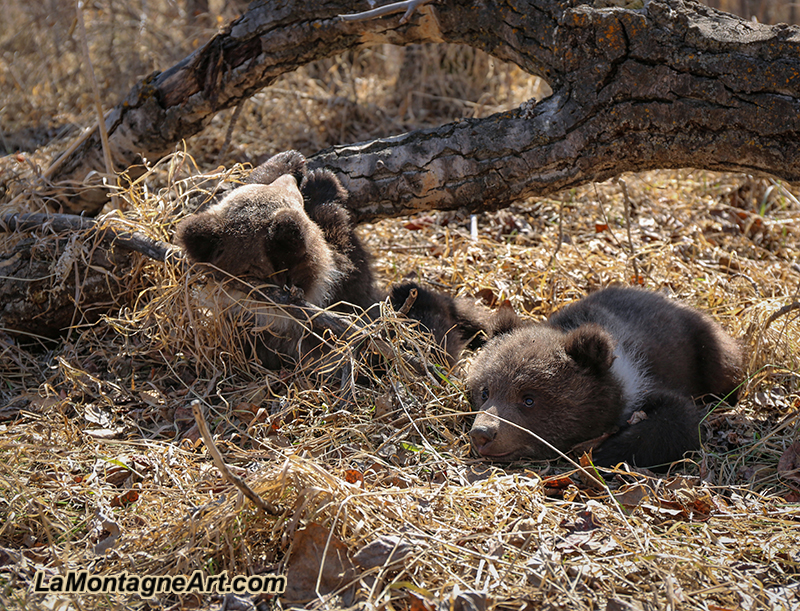 It’s with no small amount of gratitude that I enjoy such a close relationship with Discovery Wildlife Park. Their allowing me close contact with the animals over the past several years is a profound trust I don’t take lightly.
It’s with no small amount of gratitude that I enjoy such a close relationship with Discovery Wildlife Park. Their allowing me close contact with the animals over the past several years is a profound trust I don’t take lightly.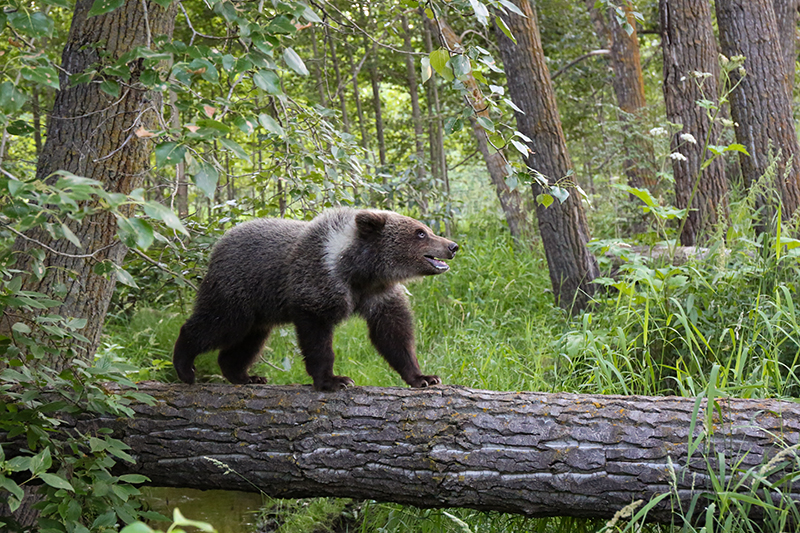 When they’re small, many of the animals spend plenty of time in these woods, where they can run, explore, climb trees, eat berries, and play.
When they’re small, many of the animals spend plenty of time in these woods, where they can run, explore, climb trees, eat berries, and play.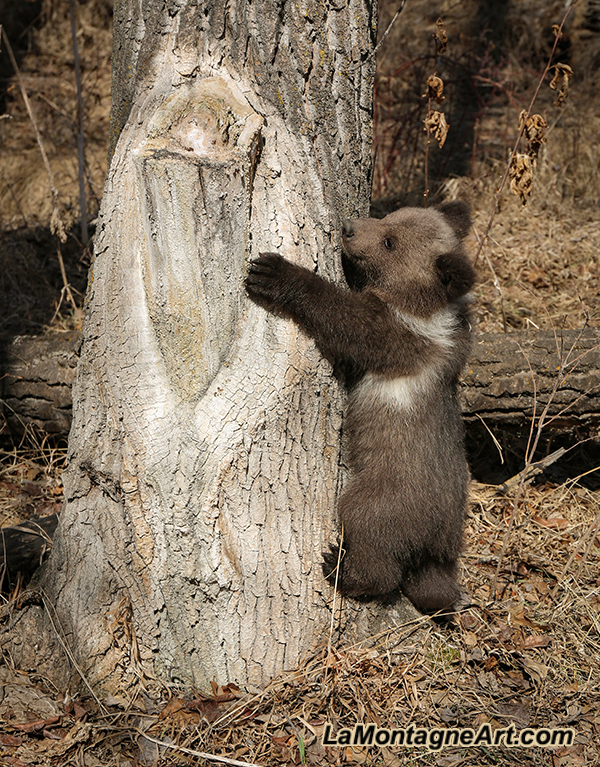 The following morning, I sent Serena a text asking how Piper was doing.
The following morning, I sent Serena a text asking how Piper was doing.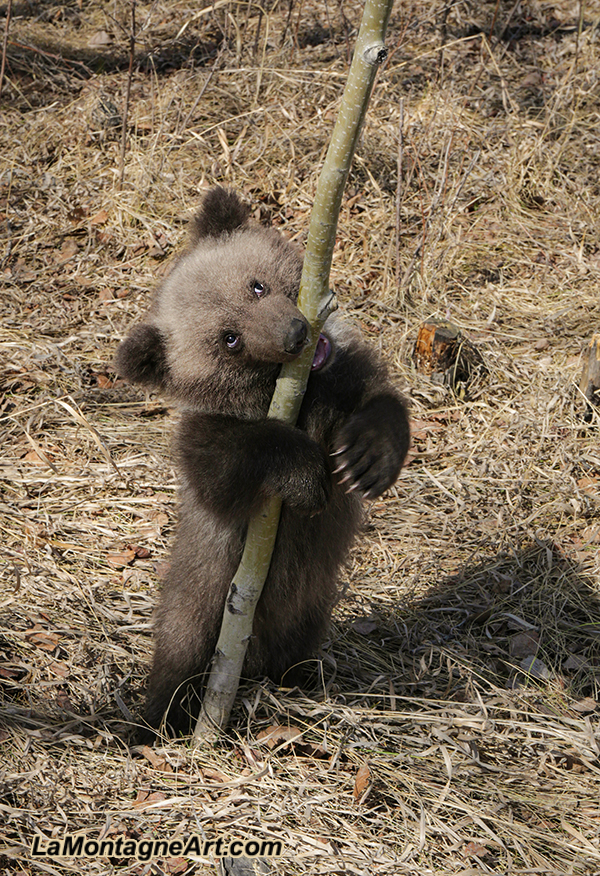 Bos was much more subdued, a little lazier, but curious and seemed to be enjoying himself as he chewed on trees, dug in the dirt, and wrestled with his adopted sibling.
Bos was much more subdued, a little lazier, but curious and seemed to be enjoying himself as he chewed on trees, dug in the dirt, and wrestled with his adopted sibling.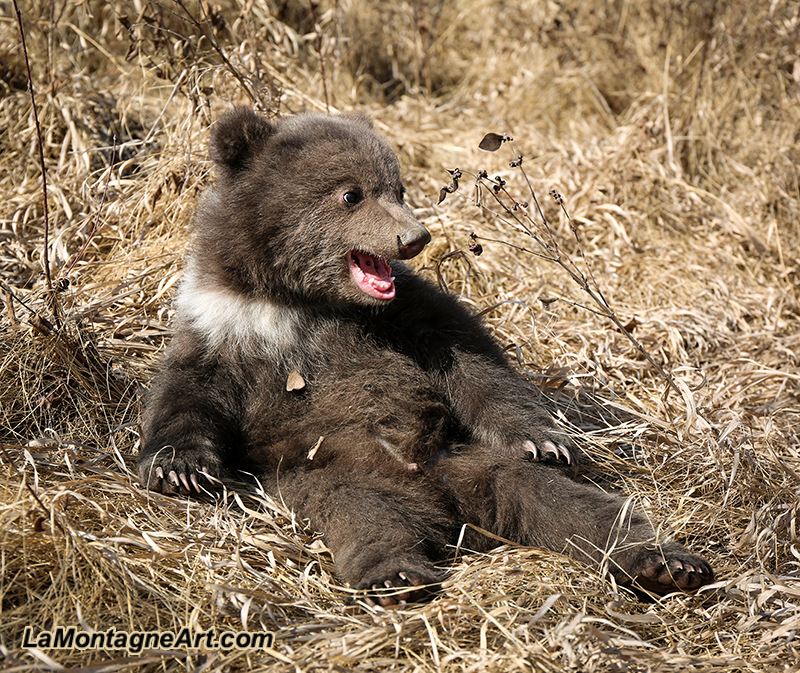
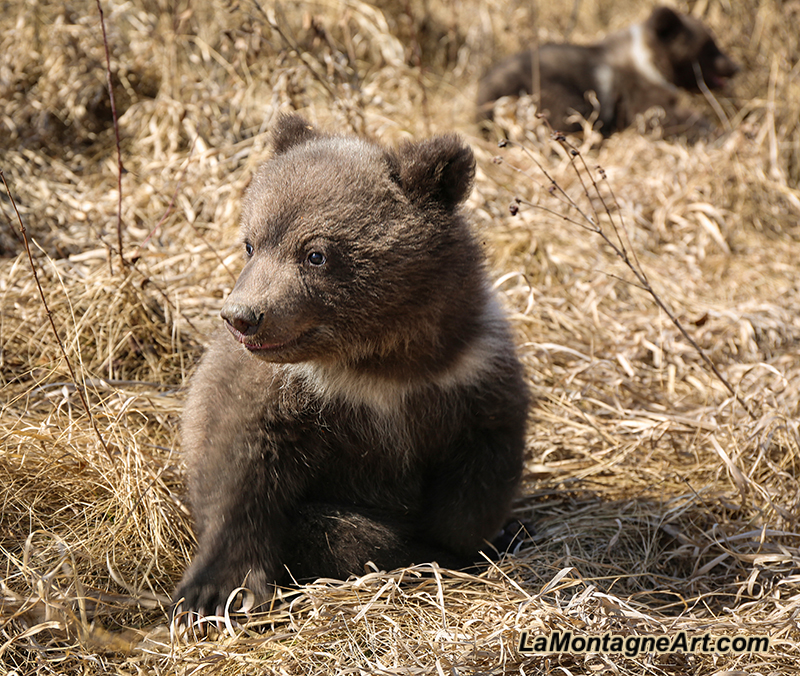
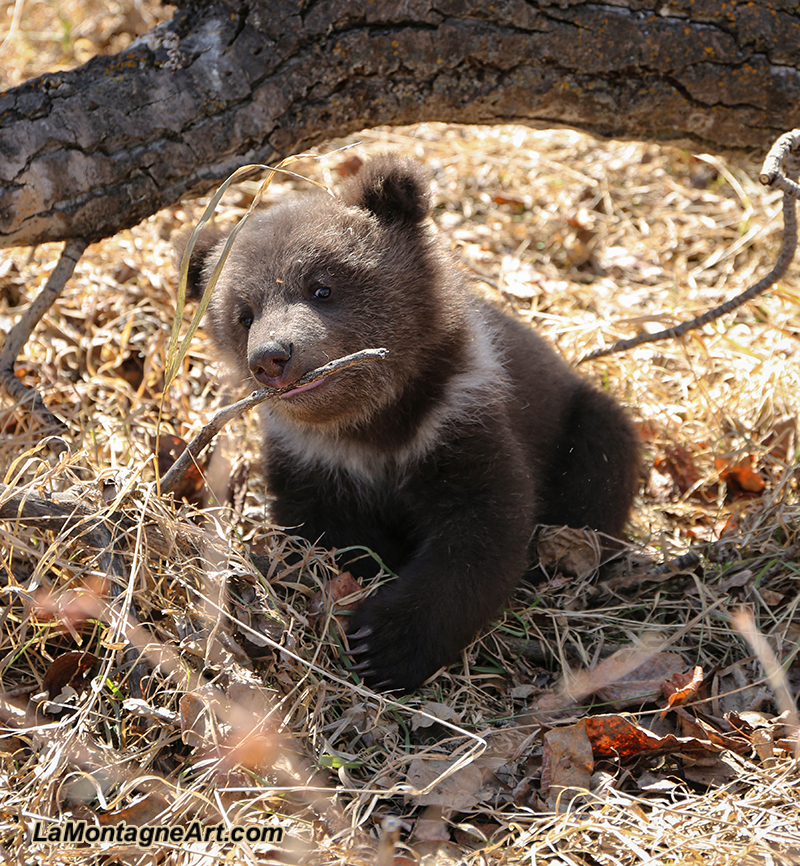 Though she’s always had an overall genial way about her, Berkley went through a bit of a rebellious teenage phase where she would push Serena’s buttons to test her boundaries. It’ll be interesting to see how these cubs grow into their personalities.
Though she’s always had an overall genial way about her, Berkley went through a bit of a rebellious teenage phase where she would push Serena’s buttons to test her boundaries. It’ll be interesting to see how these cubs grow into their personalities.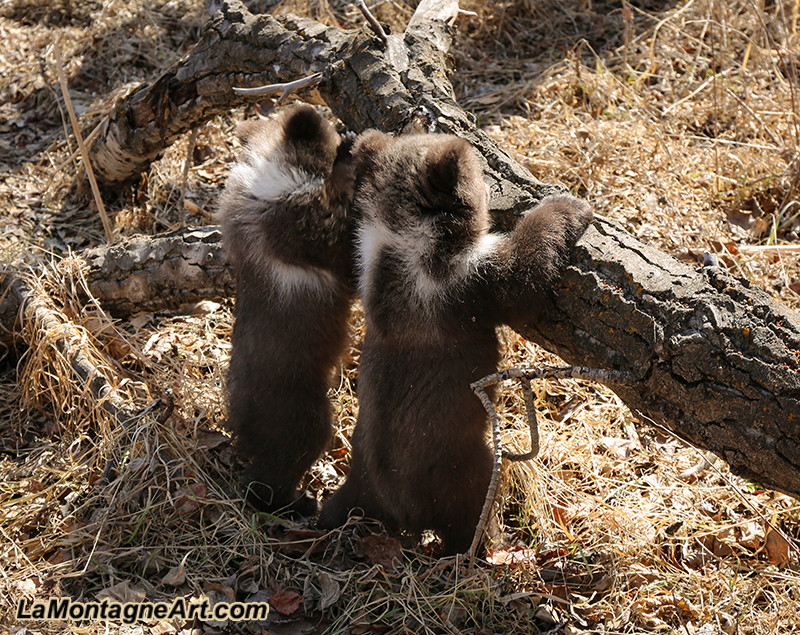 In the hour and a half we were out in the woods with the cubs, I took just under 1500 photos. With bright sunshine and dark shadows, the lighting wasn’t ideal. The bears were often between me and the sun, so I didn’t get as much light on their faces as I would generally like. Hard to complain, though, since I was watching bear cubs play in the woods. I wanted to take some video, but it was too much to handle and would have ruined the experience.
In the hour and a half we were out in the woods with the cubs, I took just under 1500 photos. With bright sunshine and dark shadows, the lighting wasn’t ideal. The bears were often between me and the sun, so I didn’t get as much light on their faces as I would generally like. Hard to complain, though, since I was watching bear cubs play in the woods. I wanted to take some video, but it was too much to handle and would have ruined the experience.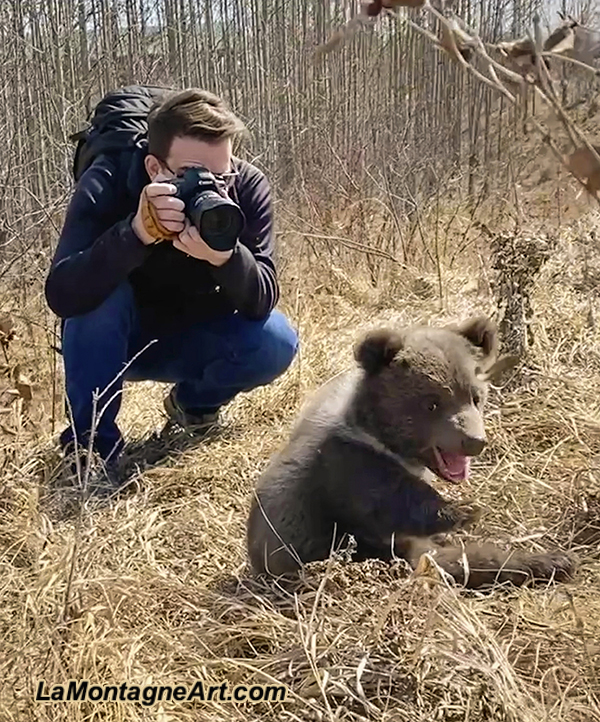
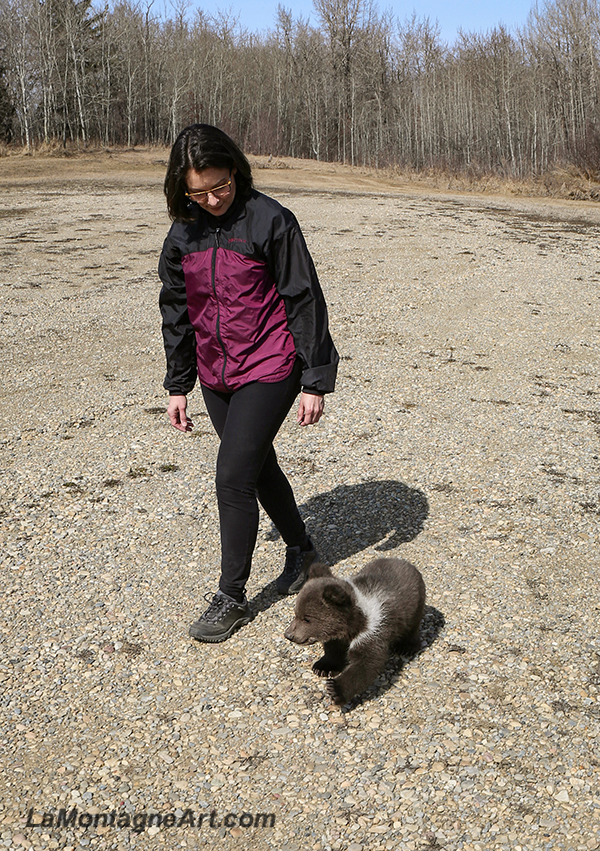
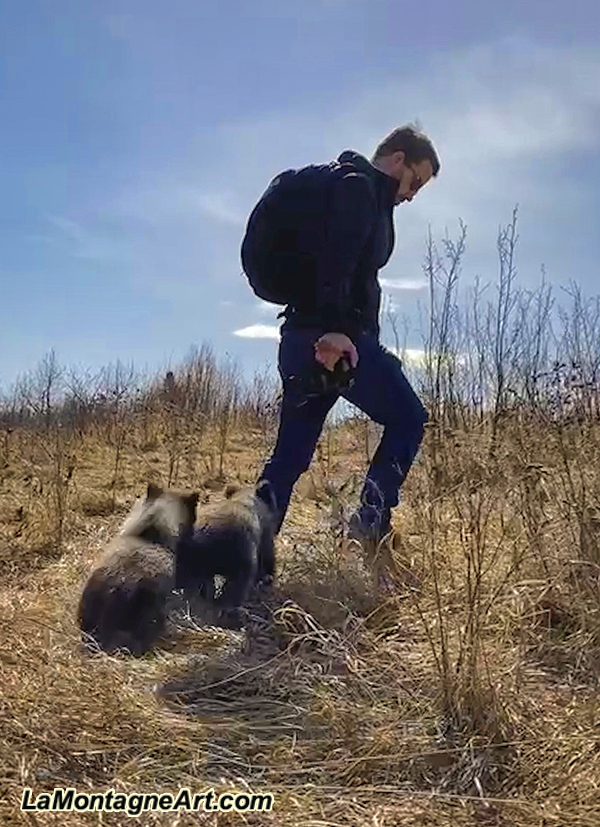 As I don’t like hoarding photos, I’ve already gone through them all and kept just over 100. Most are shots I simply liked, the ones you see here. But I did get about a dozen that I think will be the seeds for future work; there are two paintings in there for sure.
As I don’t like hoarding photos, I’ve already gone through them all and kept just over 100. Most are shots I simply liked, the ones you see here. But I did get about a dozen that I think will be the seeds for future work; there are two paintings in there for sure.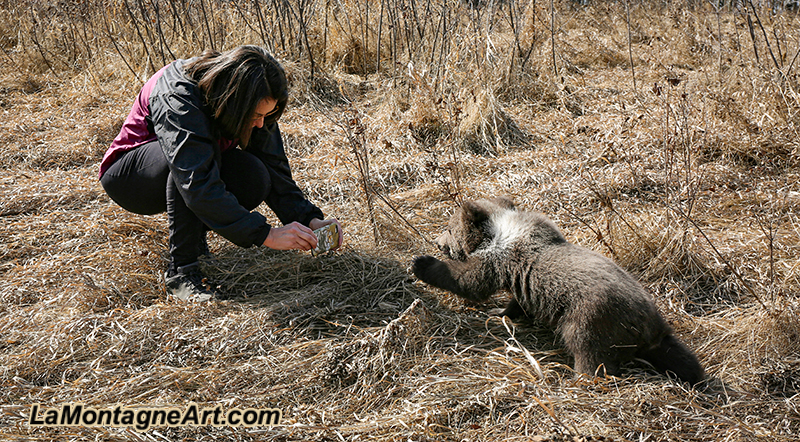
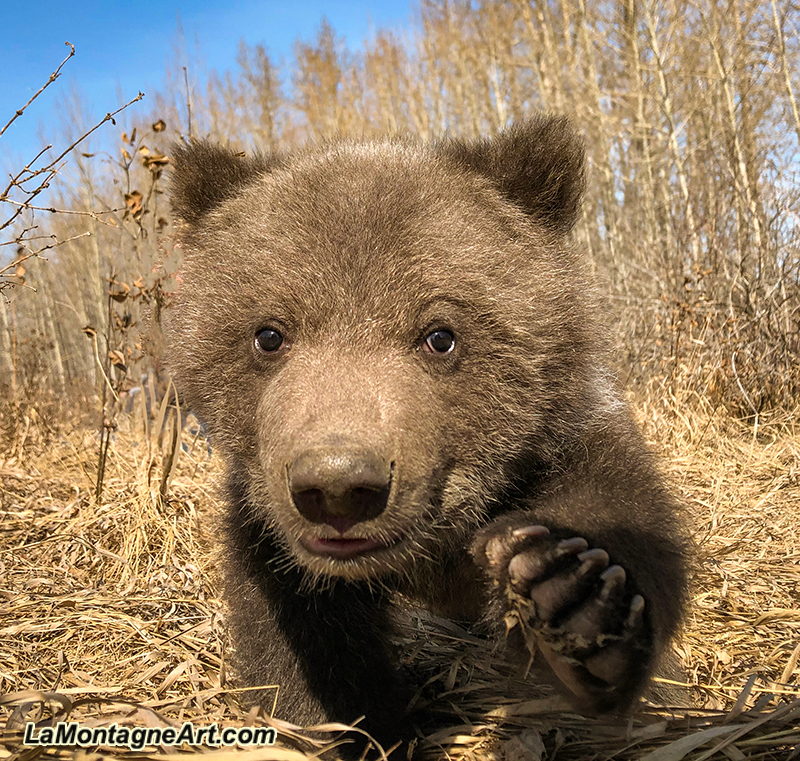 If you’d like to watch the cubs grow up, you can follow
If you’d like to watch the cubs grow up, you can follow